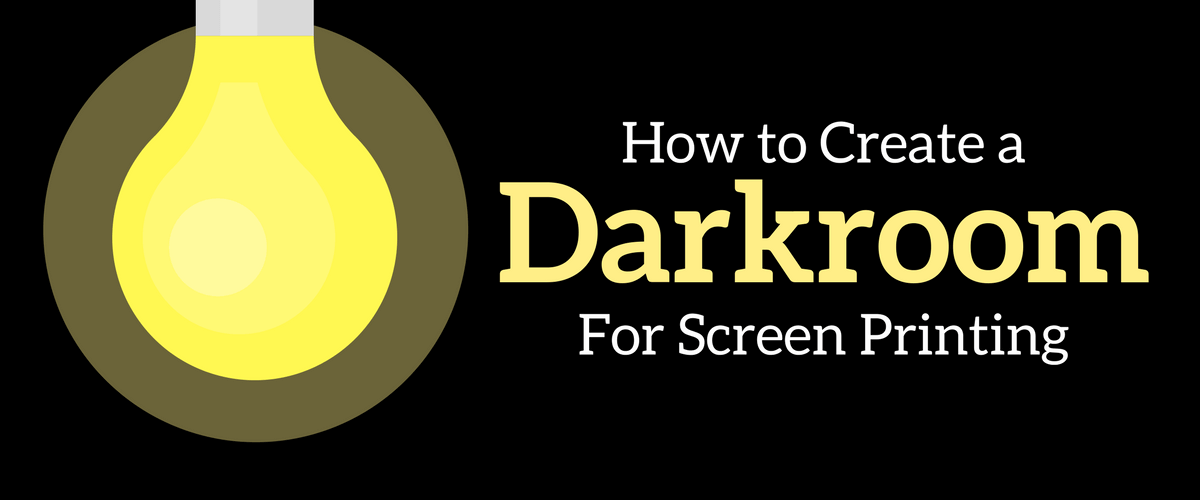

Революция в индустрии трафаретной печати благодаря передовым технологиям и качественному обслуживанию
Anatol Equipment Manufacturing Co.
1429 S Shields Dr
Waukegan, IL 60085


Революция в индустрии трафаретной печати благодаря передовым технологиям и качественному обслуживанию
Anatol Equipment Manufacturing Co.
1429 S Shields Dr
Waukegan, IL 60085

Darkrooms often strike up images of photographers hunched in red-tinged rooms. While screen printing darkrooms do share some similarities with their photography counterparts, they don’t necessarily need to be dark, cramped and isolated.
In fact, nearly any spare room, or even a spare corner, in your shop space can be converted into a suitable, functional darkroom. By following a few simple steps, you can have your darkroom set up in no time.
The first step to creating a darkroom is to designate a spare room, office or closet as your official darkroom space. If you lack a spare room and are tight on shop space, you can get creative and make a suitable darkroom in a corner of your production floor.
Despite the name — and the images it conjures — darkrooms don’t have to be entirely dark. What they need is a lack of UV light. If you are sectioning off a corner of your production floor to create a darkroom, you can use heavy black plastic sheeting to define the darkroom space and create an area free from UV light. Windows can either be blocked off with black plastic sheeting or wood, or if you would like to retain some natural light to work by, you can purchase specialty filming that filters out UV rays while still allowing light into the room.
You will need light to work by in your darkroom. You can find UV-filtered lights or UV-blocking films in a variety of colors, and any will suit the needs of a screen printing darkroom. Choose a light that allows you to see well enough to notice any dust particles or flaws on screens that could inhibit your screen prep.
Your darkroom will serve as a drying space for your emulsion-coated screens, which means the air within the darkroom needs to be dry. That’s why it’s recommended that you add a dehumidifier to the space. Many screen printers will set up their dehumidifiers so the water pulled from the air collects outside the darkroom so it can’t recirculate.
Within your darkroom, you will be coating screens with emulsion, allowing screens to dry and affixing film positives to screens for exposure. That means you’ll need a work space for handling your screens and horizontal storage racks to hold screens while they dry. Some shops will put their washout stations in their darkroom space for convenience, but that introduces moisture that can inhibit drying.
Your darkroom is a vital part of your screen printing shop. You’ll spend countless hours inside the space prepping screens for printing. A well set-up darkroom with the necessary UV-blocking properties, UV-free light and dry air will help you turn well-prepped screens into hearty, effective screen-printing stencils.
Looking for some more helpful pre-press tips? Check out these blogs:
Essential Screen Printing Pre-Press Prep Habits Successful Printers Use
Your message was successfully sent!